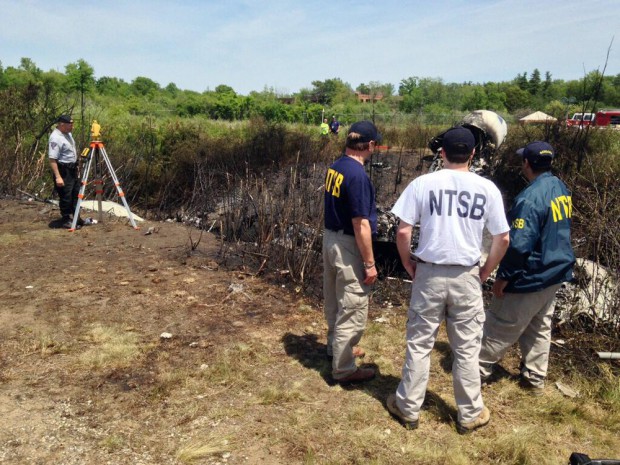Advertisement
Report Suggests Check Not Done Before Deadly Hanscom Crash
The crew of a private jet that crashed in Massachusetts, killing Philadelphia Inquirer co-owner Lewis Katz and six other people, did not perform a flight control check before attempting takeoff, a federal report issued Friday suggests.
The preliminary report from the National Transportation Safety Board on the May 31 crash at Hanscom Field outside Boston also indicated a possible problem with a mechanical gust lock system on the Gulfstream IV, which protects aircraft components from wind damage while planes are parked.
The plane would have been unable to take off had the lock been engaged, according to aviation experts.
"Review of (flight data recorder) data parameters associated with the flight control surface positions did not reveal any movement consistent with a flight control check prior to the commencement of the takeoff roll," the report stated.
The report did not identify a probable cause for the crash, and investigators have said a final report could take months to complete.
NTSB investigators previously said data from the Gulfstream IV's flight data recorders indicated the plane reached takeoff speed but never lifted off before it went off a runway, crashed into a gulley and burst into flames. Cockpit voice recordings revealed comments from the crew concerning "aircraft control," the NTSB said.
According to the preliminary report, flight data showed evidence that the gust lock was engaged during the taxi and attempted takeoff, though the handle that locks the device was found to be in the forward or "off" position.
"There is some evidence that there was a problem with the gust lock system," said aviation consultant John Cox, a former pilot and accident investigator.
Crew members, however, may not have been aware of the issue without a flight check.
"There is circumstantial or physical evidence that the elevator was locked and that the crew would not have known it because they had not performed the fight control check," Cox said.
Pilots typically check wing flaps, elevators and other components before takeoff to make sure they are working.

If the control services were locked or stuck, "those things would normally be found in a flight control check prior to takeoff," said John Gadzinski, an airline captain and aviation safety consultant. "We know one thing that definitely wasn't moving as planned was the elevator, which is necessary to rotate the aircraft (to lift the nose up)."
There was no evidence of catastrophic engine failure, the NTSB report said.
Flight data also indicated a rise in brake pressure and that the crew engaged thrust reversers, suggesting a desperate attempt by the crew to stop the aircraft after the failed takeoff.
Katz, 72, had gone to Massachusetts on May 31 to attend an education-related event at the Concord home of historian Doris Kearns Goodwin with three friends who also died in the crash in nearby Bedford: Anne Leeds, a 74-year-old retired preschool teacher; Marcella Dalsey, the director of Katz's son's foundation; and Susan Asbell, 67, the wife of a former New Jersey county prosecutor.
The three crew members who died were chief pilot James McDowell, co-pilot Bauke "Mike" de Vries and flight attendant Teresa Benhoff.
Both pilots had substantial experience and completed a Gulfstream review course and proficiency check last September, the report said.
Aircraft maintenance records showed the plane had operated for nearly 5,000 miles with 2,745 landings, the NTSB said.
Associated Press writer Joan Lowy in Washington contributed to this report.
Earlier:
This article was originally published on June 13, 2014.